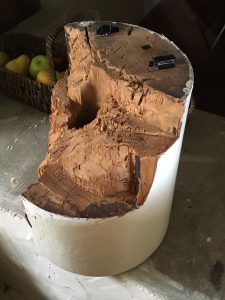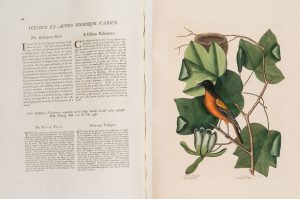The Baltimore Oriole is more than just our hometown baseball mascot. English naturalist Mark Catesby published The Natural History of Carolina, Florida, and the Bahama Islands in 1771; one of the handsome, hand-colored engravings features our own “Baltimore Bird.” This edition of Catesby’s ornithological and botanical masterpieces is the first to include an index based on the natural classification system of Carl Linnaeus.
Linnaeus named dozens of new American plant species based on Catesby’s work. In this illustration, the oriole is nested among the leaves of the tulip poplar.
 Tulip poplar wood is prized for carpentry and is often used for floors, exterior siding, and window frames in traditional home building in the Middle Atlantic. The columns on the back porch of Homewood are poplar trunks that have been shaped on a lathe and drilled top to bottom to allow for expansion and moisture.
Tulip poplar wood is prized for carpentry and is often used for floors, exterior siding, and window frames in traditional home building in the Middle Atlantic. The columns on the back porch of Homewood are poplar trunks that have been shaped on a lathe and drilled top to bottom to allow for expansion and moisture.
This technology is similar to that used for constructing masts in the shipbuilding industry that flourished in Fells Point. Tulip poplars are native to Baltimore and the tree trunks for the columns at Homewood may have been taken from the property. Tulip poplar wood is also used as a secondary wood in furniture.
This handsome illustration of a Baltimore oriole is included in Evergreen: The Garrett Family, Collectors and Connoisseurs (JHU Press, 2017), whose publication was made possible by the Richard C. von Hess Foundation. The book can be ordered through Evergreen’s shop by calling 410.516.0341. hand-colored engraving, John Work Garrett Library at Evergreen Museum & Library, Johns Hopkins University.

